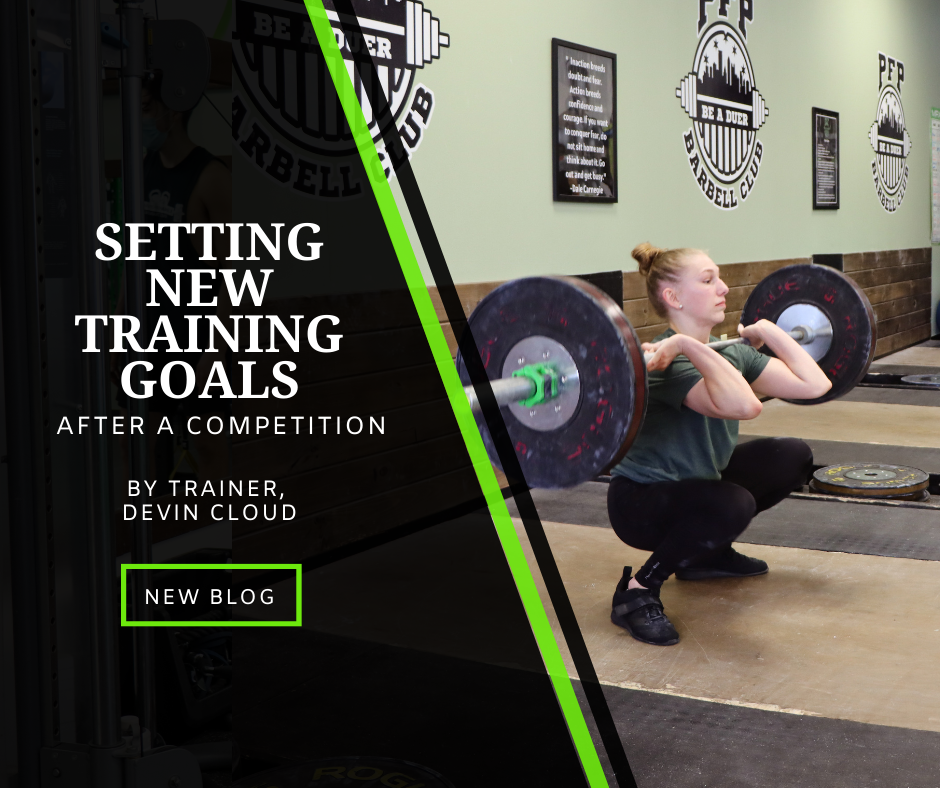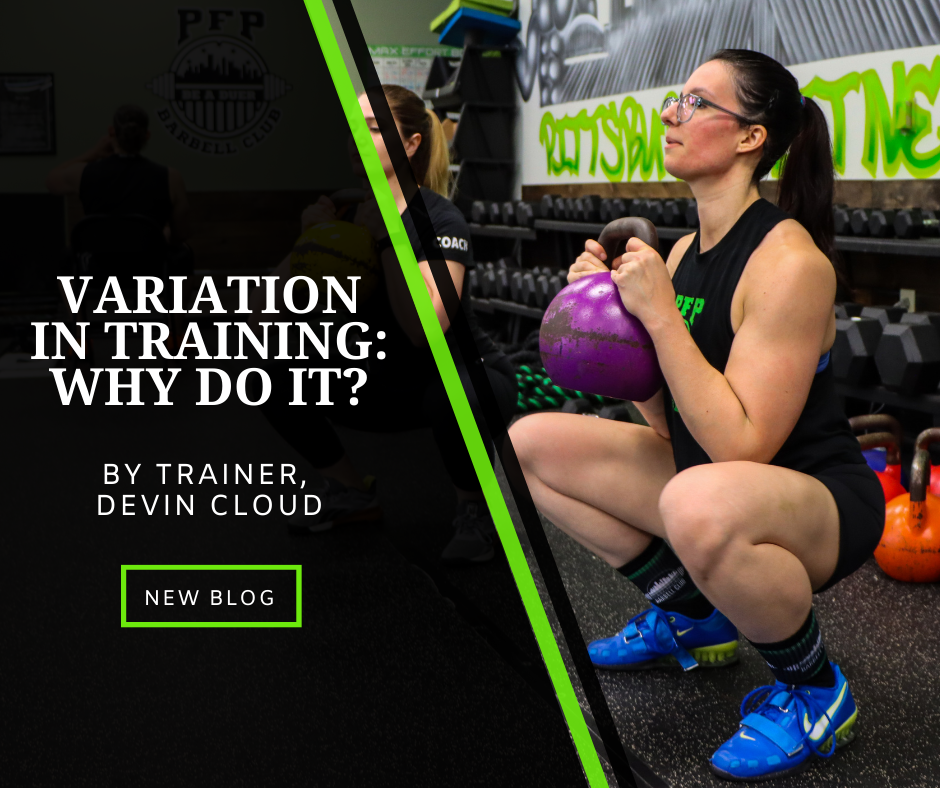
TRAP BAR & BARBELL DEADLIFTS: WHAT’S THE DIFFERENCE?
Deadlifts are a foundational movement that many people will encounter in a gym setting. Whether it is in a class setting or doing it on your own, deadlifts can be a very helpful total body movement that everyone should become familiar with. The movement transfers to our daily lives as often as squatting or walking. When you bend over to pick up a heavy box or object you are using the same movement pattern as a deadlift. There’s many variations of the exercise but today we will be talking about two: the trap bar deadlift and the barbell deadlift. How are they fundamentally different and what crossover do they share?

WEIGHTLIFTING SEMINAR: What to Expect and What You Can Learn
Weightlifting, as a sport, requires a lot of consistent and focused training over a long period of time. During that long period of time, many lifters will come to points in their training where they feel stuck or confused about what they need to focus on or work on. Weightlifting seminars consist of many lifters and coaches alike coming together at one time to learn and understand new concepts or techniques collectively.

BENEFITS OF SMALL GROUP TRAINING AT PFP
Small group training at PFP is designed to bring people together in a fun environment that offers an introduction to specific skill training or general strength training. Classes consist of everything from weightlifting and kettlebell training to more specific strength training for sports like swimming and running. Let’s take a closer look at what these classes can do for you.

GOAL SETTING AT PFP
This month at PFP, we introduced a more formalized goal-setting process and instituted weekly check-ins. We have done this to help better frame out workouts, add an additional layer of accountability, and help our coaches communicate better with all of the members at Pittsburgh Fitness Project.

TURNING ACCESSORIES INTO SUCCESSORIES
Accessory work is additional exercises or modalities that are added to your program to help you build strength, improve position, improve technical abilities, or even reduce pain caused by inefficiencies. Whatever accessory work you decide to do it should have a clear purpose for being your program, especially if you have limited time to train.

REPETITION MAXIMUMS & AUTOREGULATION
Everyone loves max-out days at the gym. These days are usually saved for the end points of training blocks and programs. The chance to test your strength and skill can seem very tantalizing because it gives you the opportunity to display the result of all the work you have done. While this is a normal time to use rep maxes, it is not the only use for them. Rep maxes can serve many purposes in a program. Whether it is to get an idea of how you are reacting to the program or indicate that you need change, rep max testing can give you a glimpse of how well or not well your training is going.

GETTING TO KNOW YOUR CARDIO EQUIPMENT
At Pittsburgh Fitness Project, we have a great selection of three types of cardio equipment you may choose from when looking to get the heart rate pumping. These are the air bike, the rower, and the self-propelled treadmill. PFP Method classes regularly use them to complete interval-style training as part of daily workouts. Weight lifters also get moving on cardio equipment for warmups and conditioning circuits. Each style of cardio equipment is unique in the movement patterns they challenge your body with, and because of this, there are a few things to consider when choosing your cardio equipment to make sure YOU have a great workout. Read on to learn what makes each piece of equipment shine.

SETTING NEW TRAINING GOALS AFTER A COMPETITION
Competing in your first competition or even just another one years down the road? Well, then, it's time to analyze and reevaluate your goals and what you’ve done. Whether it is hitting a new maximum weight, a new placing, or a new best time in an event, the time has come to restructure training and set forth new goals for yourself. The purpose at this point is to see what was done well and what might need improvement. This can come in the form of changing training frequency, entire movement patterns, training times, or trying an entirely new training style. Whatever you decide, the first step is the evaluation of yourself and previous training.

WHAT IS DOMS? DELAYED ONSET MUSCLE SORENESS
The term of DOMS is thrown around very casually in physical activity settings, but what is it?

MAXIMAL ATTEMPTS: MENTAL & PHYSICAL APPROACH
You have finally reached the point in your program where you’ll be taking maximal attempts. Whether these are snatches and clean and jerks or bench presses, squats, and deadlifts, they will no doubt challenge what you have worked for up until this point. Maximal attempts are just that, they call for us to exert both our reserve of strength as well as require the highest level of technique and precision that we can muster at that moment. Not only are our physical capabilities challenged but our mental capacity to focus and overcome what is in front of us. It is, without a doubt, extremely difficult but you are more than capable of doing so.

TEEN WEIGHTLIFTING AT PFP BARBELL
The Teen Weightlifting Program at PFP Barbell is designed to introduce teens to barbell exercises and movement in a safe, positive, and supportive environment.

VARIATION IN TRAINING: WHY DO IT?
One of the main reasons people start training/exercising is because it can be fun and challenging. There comes a certain point when you do the same things over and over they can become boring and unfulfilling. This usually leads to people dropping exercise altogether or resorting to making changes with no real plan for why. Another phenomenon that occurs is called the law of accommodation. This basically states that our bodies will eventually adjust to the stimulus we enact on them and that in order to see results, we must keep challenging it. Although, how much change is enough?

PROGRESS TRACKING: WHERE TO NEXT?
We’re moving into spring, and the first portion of your new training plan is done. You’re about to start the next part, but you are unsure how to quantify what you’ve done and how to progress to the next portion of it. There are a number of ways to determine the quantity and magnitude of your training over time. Setting yourself up properly for the future can be difficult without tracking because how can you discern what is too much or too little?

GET TO KNOW OUR TRAINERS: ANDREW DUFF
In my personal training career, I have experienced a wide variety of people. I have seen old and young athletes and non-athletes. I have worked with people that had very serious and particular goals, as well as people with very general goals. In any case, what I have learned is that it’s not a person's goals, background, or even personality that influences how I view working with them. Rather it is the quality of our communication and the relationship we build.
